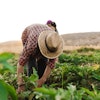
The Foundation for Food & Agriculture Research (FFAR) hopes to inspire a new form of agriculture research to help sustain farmland in the offseason with living cover crops. The research institution says that post-harvest farmland can accumulate numerous water-related challenges like soil nutrient loss and erosion and precipitation runoff. To stop these issues, FFAR gives a a $1,997,454 grant to the University of Minnesota to develop models for sustainable supply chains that create markets for crops farmers can grow between seasons.
“Robust supply chains that link supply to demand are key to farmers’ adoption of continuous living cover crops and to realizing the environmental and economic benefits that these crops offer,” said Dr. Jordan. “We are deeply grateful for the opportunity to research new supply-chain development strategies for these crops.”
Per FFAR:
- Planting continuous living cover crops, such as intermediate wheatgrass, winter camelina, pennycress, winter barley and hybrid hazelnut, has several environmental benefits. These perennials—which do not require replanting—and winter-hardy annual crops decrease fertilizer runoff to surface and groundwater and increase farmland’s ability to absorb and hold rainfall. Croplands that better retain water can reduce soil erosion and prevent downstream flooding of cities and infrastructure. However, farmers are often hesitant to plant these crops because most are not widely used commercially, making farming and supply chain logistics risky or cost prohibitive.
University of Minnesota researchers, led by Dr. Nicholas Jordan, are working with cross-sector partners to develop and scale sustainable supply chains for several cover crops. Sustainable supply chains link on-farm crop production to end-use markets in economically, environmentally and socially beneficial ways. Researchers are running six regional pilot projects to determine appropriate crops for various sites and growing conditions. This research is examining potential markets, water management needs and other environmental and social benefits of perennials and cover crops. The multilevel strategy will lead to larger supply and demand systems for a wider adoption of the crops.

















